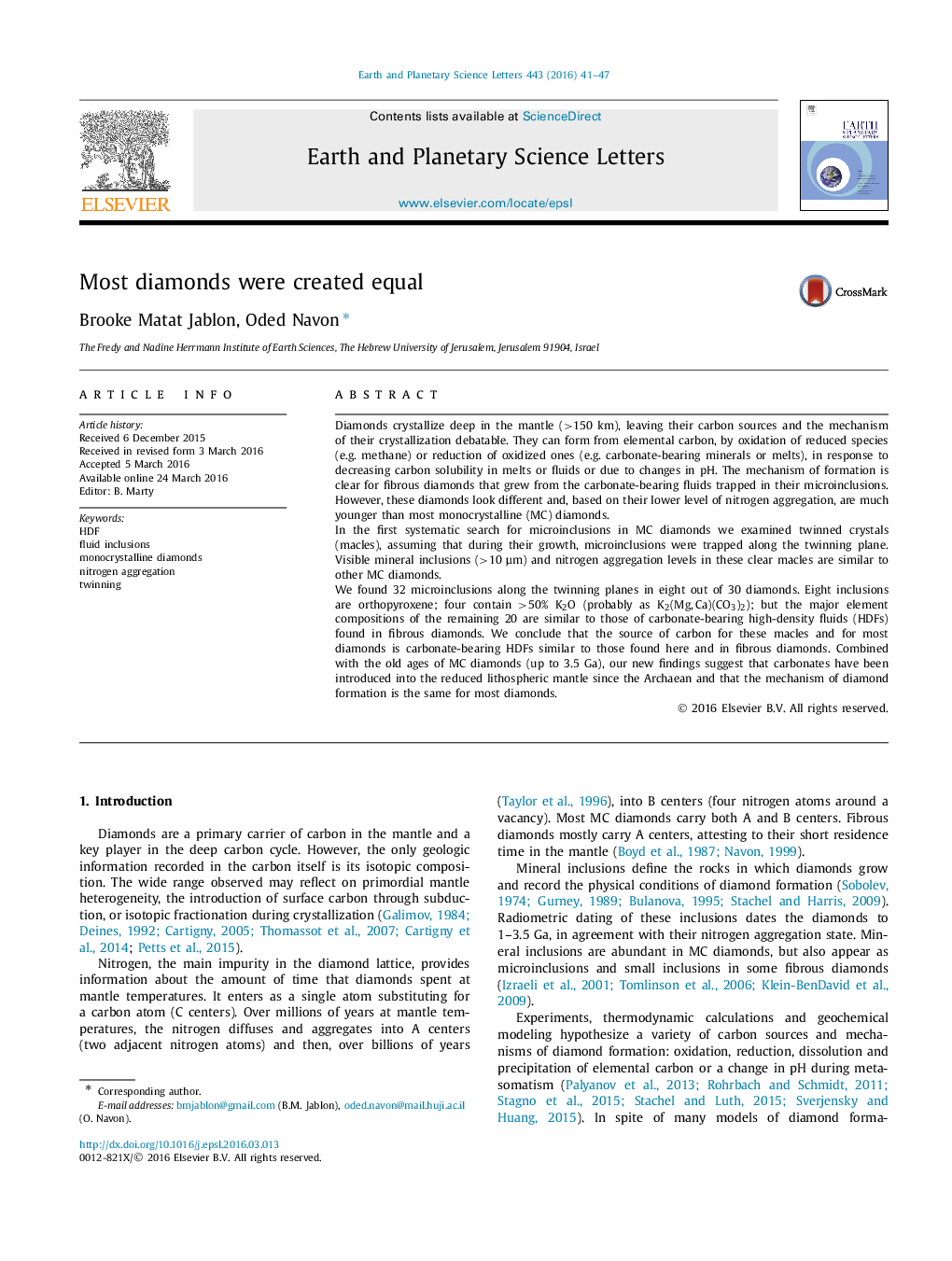| کد مقاله | کد نشریه | سال انتشار | مقاله انگلیسی | نسخه تمام متن |
|---|---|---|---|---|
| 6427421 | 1634713 | 2016 | 7 صفحه PDF | دانلود رایگان |
• The formation of monocrystalline (MC) diamonds is still debated.
• We conducted the first systematic search for fluid inclusions in MC diamonds.
• We examined 30 gemmy twinned diamonds with evolved nitrogen aggregation (high B/(A+B)B/(A+B) ratio).
• We found 20 microinclusions with compositions that resemble the fluids in fibrous diamonds.
• This indicates that most MC diamonds grew from carbonate-bearing fluids.
Diamonds crystallize deep in the mantle (>150 km), leaving their carbon sources and the mechanism of their crystallization debatable. They can form from elemental carbon, by oxidation of reduced species (e.g. methane) or reduction of oxidized ones (e.g. carbonate-bearing minerals or melts), in response to decreasing carbon solubility in melts or fluids or due to changes in pH. The mechanism of formation is clear for fibrous diamonds that grew from the carbonate-bearing fluids trapped in their microinclusions. However, these diamonds look different and, based on their lower level of nitrogen aggregation, are much younger than most monocrystalline (MC) diamonds.In the first systematic search for microinclusions in MC diamonds we examined twinned crystals (macles), assuming that during their growth, microinclusions were trapped along the twinning plane. Visible mineral inclusions (>10 μm) and nitrogen aggregation levels in these clear macles are similar to other MC diamonds.We found 32 microinclusions along the twinning planes in eight out of 30 diamonds. Eight inclusions are orthopyroxene; four contain >50% K2O (probably as K2(Mg, Ca)(CO3)2); but the major element compositions of the remaining 20 are similar to those of carbonate-bearing high-density fluids (HDFs) found in fibrous diamonds. We conclude that the source of carbon for these macles and for most diamonds is carbonate-bearing HDFs similar to those found here and in fibrous diamonds. Combined with the old ages of MC diamonds (up to 3.5 Ga), our new findings suggest that carbonates have been introduced into the reduced lithospheric mantle since the Archaean and that the mechanism of diamond formation is the same for most diamonds.
Journal: Earth and Planetary Science Letters - Volume 443, 1 June 2016, Pages 41–47
